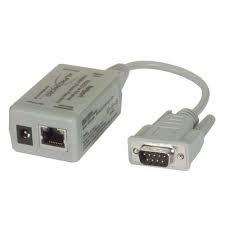Introduction:
In today’s digital age, businesses and industries depend heavily on communication between machines, networks, and servers. However, many industrial and legacy devices still rely on serial communication ports, such as RS232, RS422, or RS485. On the other hand, modern networks are based on Ethernet and IP communication. This gap in communication technology can create challenges when integrating older equipment into newer systems. This is where the serial to ethernet adapter becomes essential.
A serial to ethernet adapter, also known as a serial device server, is a compact device designed to convert serial communication signals into Ethernet data packets. This allows older machines, sensors, controllers, and other industrial devices to connect directly to modern networks, enabling remote monitoring, data logging, and automation without replacing existing equipment.
Why Serial Communication Still Exists
Before diving into the benefits of the serial to ethernet adapter, it is important to understand why serial ports are still used:
-
Reliability: Serial communication is stable and dependable, especially in industrial settings.
-
Low Cost: Many older devices are expensive to replace, and upgrading them entirely is often unnecessary.
-
Simplicity: Serial communication protocols are simple and easy to implement.
However, serial communication has limitations—mainly short cable distances and one-to-one communication. Ethernet solves these problems, offering high-speed data transfer and support for multiple devices on large networks.
How a Serial to Ethernet Adapter Works
The serial to ethernet adapter acts as a translator. It takes data from the serial device, converts it into a network-compatible format, and transmits it over a local network or the internet. It also works the other way around, converting incoming network data back to serial format so the device can understand it.
The basic working steps are:
-
Connect the serial device to the adapter (RS232/RS485 port).
-
Connect the adapter to the Ethernet network (LAN).
-
Configure network settings, such as IP address and communication parameters.
-
Access the device remotely from a PC or server using software or a web interface.
This allows full control and monitoring of the device from anywhere, increasing efficiency and reducing physical maintenance.
Key Benefits of Using a Serial to Ethernet Adapter
1. Remote Access and Monitoring
Technicians can monitor and control devices from anywhere, saving time and minimizing on-site visits.
2. Cost-Effective Integration
Instead of replacing expensive legacy equipment, the adapter allows systems to connect to modern networks.
3. Increased Communication Range
Serial communication is limited by cable distance, but Ethernet allows long-distance communication over local networks or even the internet.
4. Enhanced Data Management
Data can be logged, analyzed, and shared with cloud platforms, automation software, or control rooms.
5. Compatibility Across Multiple Devices
The adapter supports various protocols and can be used with:
-
PLCs
-
CNC machines
-
Industrial sensors
-
Barcode scanners
-
Medical equipment
-
Security devices
See more: Serial to Ethernet converter
Where Serial to Ethernet Adapters Are Commonly Used
Because of their versatility, these adapters are widely used in industries and businesses such as:
-
Manufacturing plants
-
Automation and robotics
-
Security and surveillance systems
-
Energy and utility monitoring
-
Laboratory and medical instrumentation
-
Retail and warehouse management
Any environment that requires old equipment to communicate with new digital platforms can benefit from this adapter.
Factors to Consider When Choosing a Serial to Ethernet Adapter
When selecting the right adapter, consider:
| Feature | What to Look For |
| Port Type | RS232, RS422, or RS485 compatibility |
| Number of Serial Ports | Single-port or multi-port adapter |
| Network Support | Ethernet speed, TCP/IP support |
| Software Tools | Configuration and device management tools |
| Durability | Industrial grade vs. consumer grade |
For harsh environments, select an industrial serial to ethernet adapter with temperature and surge protection.
Conclusion
The serial to ethernet adapter is a powerful and cost-efficient solution for connecting legacy serial devices to modern IP networks. It bridges the gap between old and new technology, enabling remote monitoring, automation, and data integration while preserving existing equipment investments. Whether in industrial manufacturing, security systems, or laboratory environments, this device plays a vital role in building efficient and connected systems.
See more blogs: Visit here



